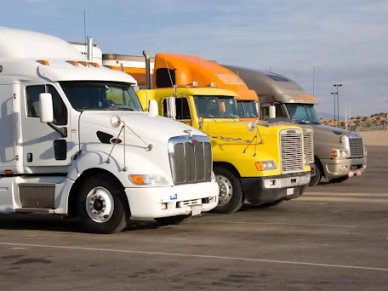A truck being heavier can make it more dangerous for several reasons. Firstly, the increased weight of a truck means it has more momentum when in motion. This makes it harder to stop quickly, increasing the risk of collisions, especially in emergency braking situations. Heavier trucks require longer distances to come to a complete stop compared to lighter vehicles, which can be particularly hazardous in high-traffic areas or adverse weather conditions.
Secondly, the greater mass of a heavy truck can cause more severe damage in the event of a collision. The force of impact is significantly higher, which can lead to more serious injuries or fatalities for occupants of smaller vehicles involved in the crash.
Additionally, heavy trucks can cause more wear and tear on road infrastructure, leading to potholes and other road damage that can pose risks to all road users. The sheer size and weight of these vehicles can also make them less maneuverable, increasing the likelihood of accidents during turns or lane changes.
Clearly, the increased weight of a truck amplifies the potential dangers associated with its operation, affecting stopping distance, impact severity, and overall road safety. Proper regulations and safety measures are essential to mitigate these risks. That’s why many authorities are pushing to enforce weight limits.
Enforcing truck weight limits significantly influences the logistics and supply chain sectors. By regulating the load capacity, authorities can extend the lifespan of road infrastructure, reducing maintenance costs. This regulation also ensures safer road conditions, potentially decreasing the number of road accidents involving heavy vehicles.
The economic repercussions are multifaceted. Businesses might face higher operational costs due to increased trips or the need to invest in more trucks to transport the same volume of goods. However, these costs can be offset by the overall improvements in road safety and infrastructure longevity.
Furthermore, compliance with weight limits can impact delivery times and efficiency. Logistics companies may need to re-evaluate their strategies to optimize routes and loads within the legal parameters. This shift can foster innovation in logistics planning and contribute to sustainable practices within the industry.
Economic Consequences of Truck Weight Regulations
Enforcing truck weight limits affects various economic factors in logistics and supply chains, such as cost increases in transportation, infrastructure maintenance, and adjustments within supply chain operations.
Impact on Transportation Costs
Implementing strict weight regulations can lead to higher transportation costs. Heavier trucks often carry more goods but are subject to limitations, requiring more trips to move the same volume. This increases fuel consumption, driver wages, and vehicle depreciation. Companies may pass these costs on to consumers, leading to higher prices for goods.
Smaller trucking companies might struggle with these regulations, potentially reducing competition within the industry. A Nashville truck accident lawyer will tell you that overloaded trucks can lead to accidents, which further increase costs through legal fees and damage settlements.
Effects on Infrastructure and Maintenance
Strict weight limits help reduce wear on roads and bridges. Heavier trucks accelerate deterioration, leading to more frequent repairs and maintenance. Better-maintained infrastructure can result in fewer construction delays and detours.
Government spending on infrastructure repair can decrease, freeing up funds for other projects. The role of a Nashville truck accident lawyer often involves dealing with accidents due to poor road conditions, illustrating the economic impact of infrastructure quality on safety and legal expenses.
Adjustments within Supply Chain Operations
Companies may need to adjust logistics strategies to comply with weight limits. This might involve using more vehicles, optimizing routes, or investing in lighter vehicles and more efficient loading techniques.
Supply chain coordination becomes more complex, requiring better planning and communication. Nashville truck accident lawyers suggest that these adjustments minimize accident risks, leading to potential savings in legal costs and insurance premiums. Moreover, efficient supply chains can improve delivery times and customer satisfaction.
Adapting to Weight Limit Enforcement
Enforcing truck weight limits requires the logistics industry to innovate in truck design and adapt their logistics planning strategies. These adaptations are essential for maintaining efficiency and compliance.
Innovations in Truck Design
Manufacturers are focusing on new materials and engineering techniques. Utilizing lightweight materials like aluminum and high-strength steel can help trucks meet weight regulations without compromising durability.
Advanced Telematics:
- Monitors weight distribution
- Real-time data for compliance
Aerodynamic Features:
- Enhances fuel efficiency
- Reduces overall weight
These innovations ensure that trucks remain compliant while optimizing performance and safety, addressing concerns such as those raised by a Nashville truck accident lawyer.
Strategic Logistics Planning
Companies are rethinking their logistics strategies to adapt to weight enforcement, focusing on route optimization and load management.
Route Optimization:
- Reduces unnecessary mileage
- Prevents delays
Load Management:
- Efficient pallet stacking
- Weight distribution for balance
By being proactive in logistics planning, companies can avoid penalties and ensure smoother operations. This alignment helps retain efficiency and minimizes risk, essential considerations in logistics management.














Leave a Reply